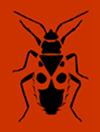Biogeography and habitat preferences of red wood ants of the Formica rufa group (Hymenoptera: Formicidae) in Finland, based on citizen science data
IF 1.2
3区 农林科学
Q2 Agricultural and Biological Sciences
引用次数: 2
Abstract
Red wood ants (RWA) of the Formica rufa group are ecosystem engineers and important species in boreal and temperate forests. However, the permanent and temporal loss of forest habitats is a serious threat to their existence and is likely to increase with climate change. Due to the current threat of losing species, quick actions are needed. Reported here is the biogeography, relative abundance and habitat preferences of fi ve species of RWA in Finland based on citizen science data. Species that occur in the lowlands of the Alps also occur throughout the southern parts of Finland. Only two of the fi ve species, F. aquilonia Yarrow, 1955 and F. lugubris Zetterstedt, 1838, were common throughout the country, including northern Lapland. As their name suggests, RWAs occur mostly in forests and forest edges, but they also sometimes inhabit open or semi-open yards, mires and meadows. The most forest-specialist species is F. aquilonia and the least F. rufa Linnaeus, 1761. Surprisingly, the meadow wood ant F. pratensis Retzius, 1783 is the second most forest dwelling species, however, its preference for forest edges is clearly higher than for forest interiors. Based on current data, F. rufa may be the most tolerant of living close to buildings as its relative abundance in yards was much higher than that of the other species. The data obtained on distributions and relative abundances could be compared in the future with the results of similar surveys to detect changes in species distributions, relative abundances and habitat preferences.芬兰红木蚁群(膜翅目:蚁科)的生物地理特征及生境偏好
红蚁(RWA)是北美和温带森林中的生态系统工程师和重要物种。然而,森林栖息地的永久性和暂时性丧失对其生存构成严重威胁,并可能随着气候变化而增加。由于目前物种灭绝的威胁,需要迅速采取行动。本文报道了基于公民科学数据的芬兰五种RWA的生物地理学、相对丰度和栖息地偏好。阿尔卑斯山低地的物种也分布在芬兰南部。这五个物种中只有两个,即1955年的F.aquilonia Yarrow和1838年的F.lugubris Zetterstedt,在全国各地都很常见,包括拉普兰北部。顾名思义,RWA主要出现在森林和森林边缘,但有时也栖息在开阔或半开阔的庭院、沼泽和草地上。森林专业物种最多的是A.aquilonia,最少的是F.rufa Linnaeus,1761年。令人惊讶的是,草地木蚁F.pratensis Retzius,1783是第二大居住在森林中的物种,然而,它对森林边缘的偏好明显高于对森林内部的偏好。根据目前的数据,F.rufa可能是最能忍受住在建筑物附近的物种,因为它在院子里的相对丰度远高于其他物种。未来可以将获得的分布和相对丰度数据与类似调查的结果进行比较,以检测物种分布、相对丰度和栖息地偏好的变化。
本文章由计算机程序翻译,如有差异,请以英文原文为准。
求助全文
约1分钟内获得全文
求助全文
来源期刊
CiteScore
2.30
自引率
7.70%
发文量
43
审稿时长
6-12 weeks
期刊介绍:
EJE publishes original articles, reviews and points of view on all aspects of entomology. There are no restrictions on geographic region or taxon (Myriapoda, Chelicerata and terrestrial Crustacea included). Comprehensive studies and comparative/experimental approaches are preferred and the following types of manuscripts will usually be declined:
- Descriptive alpha-taxonomic studies unless the paper is markedly comprehensive/revisional taxonomically or regionally, and/or significantly improves our knowledge of comparative morphology, relationships or biogeography of the higher taxon concerned;
- Other purely or predominantly descriptive or enumerative papers [such as (ultra)structural and functional details, life tables, host records, distributional records and faunistic surveys, compiled checklists, etc.] unless they are exceptionally comprehensive or concern data or taxa of particular entomological (e.g., phylogenetic) interest;
- Papers evaluating the effect of chemicals (including pesticides, plant extracts, attractants or repellents, etc.), irradiation, pathogens, or dealing with other data of predominantly agro-economic impact without general entomological relevance.

 求助内容:
求助内容: 应助结果提醒方式:
应助结果提醒方式:


